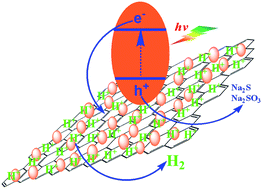Hydrogen evolution from water using semiconductor nanoparticle/graphene composite photocatalysts without noble metals†
Abstract
Semiconductor

* Corresponding authors
a
Key Laboratory of Photochemical Conversion and Optoelectronic Materials and HKU-CAS Joint Laboratory on New Materials, Technical Institute of Physics and Chemistry, Chinese Academy of Sciences, Beijing, P.R. China
E-mail:
fuwf@mail.ipc.ac.cn
b College of Chemistry and Chemical Engineering, Yunnan Normal University, Kunming, P.R. China
c
Key Laboratory of Bioorganic Phosphorus Chemistry & Chemical Biology, Department of Chemistry, Tsinghua University, Beijing, P.R. China
E-mail:
jhli@mail.tsinghua.edu.cn
d WPI-Advanced Institute for Materials Research, Tohoku University, Sendai, Japan
Semiconductor

 Please wait while we load your content...
Something went wrong. Try again?
Please wait while we load your content...
Something went wrong. Try again?
X. Lv, W. Fu, H. Chang, H. Zhang, J. Cheng, G. Zhang, Y. Song, C. Hu and J. Li, J. Mater. Chem., 2012, 22, 1539 DOI: 10.1039/C1JM14502A
To request permission to reproduce material from this article, please go to the Copyright Clearance Center request page.
If you are an author contributing to an RSC publication, you do not need to request permission provided correct acknowledgement is given.
If you are the author of this article, you do not need to request permission to reproduce figures and diagrams provided correct acknowledgement is given. If you want to reproduce the whole article in a third-party publication (excluding your thesis/dissertation for which permission is not required) please go to the Copyright Clearance Center request page.
Read more about how to correctly acknowledge RSC content.
 Fetching data from CrossRef.
Fetching data from CrossRef.
This may take some time to load.
Loading related content
